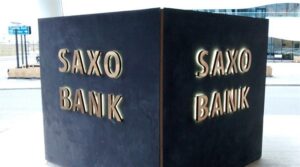
The financial
industry has been buzzing over the prospect of a Grayscale Bitcoin
Exchange-Traded Fund (ETF). Grayscale Investments is well-known for its
Grayscale Bitcoin Trust (GBTC), which allows investors to obtain exposure to
Bitcoin through standard brokerage accounts.
However, there
has been an increase in demand for a Grayscale Spot Bitcoin ETF, which would
track the actual price of Bitcoin.
The
Ascension of Bitcoin ETFs
ETFs
(Exchange-Traded Funds) have become a popular way for investors to gain
exposure to Bitcoin. These exchange-traded funds offer a straightforward and
regulated way to acquire and sell Bitcoin without the need for a digital wallet
or direct ownership of the cryptocurrency. Investors instead hold ETF shares,
which reflect a claim on the underlying Bitcoin.
Several Bitcoin
ETFs have already hit the market in different nations. In Canada, for example,
the Purpose Bitcoin ETF and the Evolve Bitcoin ETF have received a lot of
attention and money. Meanwhile, multiple applications for Bitcoin ETFs have
been filed in the United States, with several awaiting approval from the
Securities and Exchange Commission (SEC).
The
Dominance of Grayscale
Grayscale
Investments, which was launched in 2013, has been instrumental in bringing
digital assets into the mainstream financial scene. The Grayscale Bitcoin Trust
(GBTC), its flagship product, allows accredited investors to obtain exposure to
Bitcoin. GBTC has emerged as a popular choice among institutional investors and
high-net-worth people seeking regulated exposure to cryptocurrencies.
While GBTC is
widely used, it has one major distinction: it does not directly track the
actual price of Bitcoin. It is instead based on the Bitcoin Investment Trust,
which holds Bitcoin but lacks the transparency and liquidity of a typical ETF.
The Case for a
Bitcoin Grayscale Spot ETF
The desire for
a product that closely matches the actual price of Bitcoin drives the demand
for a Grayscale Spot Bitcoin ETF. An ETF of this type would give investors a
more direct and transparent option to invest in cryptocurrency. It would
eliminate the premium or discount to NAV that GBTC can suffer, bringing the
ETF’s price in line with the spot market.
Investors are
interested in a Grayscale Spot Bitcoin ETF as a way to get efficient and
cost-effective Bitcoin exposure. A spot-based ETF may also offer lower expenses
than GBTC, which charges a management fee.
Regulatory
Obstacles
The regulatory
roadblocks to implementing a Grayscale Spot Bitcoin ETF are numerous. The
biggest impediment is the US Securities and Exchange Commission, which has been
cautious and deliberative in its approach to issuing Bitcoin ETFs. Concerns
about market manipulation, fraud, and investor protection have been cited as
grounds for the SEC’s reluctance.
The SEC
considers the integrity of the underlying Bitcoin market to be one of the most
important aspects. The agency seeks confirmation that the Bitcoin market is
resistant to manipulation and fraud, which has resulted in prior Bitcoin ETF
applications being delayed or rejected.
The SEC’s
Position on Bitcoin ETFs
Over the years,
the SEC has rejected various Bitcoin ETF proposals, citing concerns about
market manipulation and investor safety. To detect and prevent fraud and
manipulation, the SEC has underlined the importance of surveillance-sharing
agreements between ETF issuers and regulated markets.
However, there
are hints of change within the SEC. There appears to be a stronger desire to
engage with the digital asset market under the leadership of Chairman Gary
Gensler, who has an experience in blockchain and cryptocurrencies. Chairman
Gensler highlighted the potential benefits of a Bitcoin ETF, but he also
emphasized the importance of strong market surveillance systems.
The Next Steps
Several actions
must be performed in order for a Grayscale Spot Bitcoin ETF to become a
reality:
- Market
Maturity: The Bitcoin market needs to mature further, including improvements in
market integrity, surveillance, and regulatory compliance. This would increase
the SEC’s confidence in approving a spot-based ETF. - Regulatory
discussion: It is critical to maintain ongoing discussion between industry
stakeholders and regulatory agencies. Collaboration can aid in the resolution
of regulatory concerns and the development of a framework that promotes
investor protection and market integrity. - Market
Surveillance: It is critical to create and implement effective market
surveillance techniques and agreements. These techniques can assist in
monitoring and deterring fraudulent actions, ultimately giving the SEC with the
guarantees it requires. - Investor
Education: As the bitcoin industry develops, investor education will become
more vital. Providing clear and accurate information about Bitcoin, ETFs, and
associated risks can help investors and regulators develop trust and
confidence. - Regulatory
Approval: The SEC has the final say on whether or not to approve a Grayscale
Spot Bitcoin ETF. Continued involvement with the agency, together with
improvements in the sector and market maturation, may raise the likelihood of
approval.
The Market’s
Reaction
The financial
markets have been keeping a close eye on developments concerning a Grayscale
Spot Bitcoin ETF. If such an ETF is approved, it might have far-reaching consequences
for both the cryptocurrency and traditional financial markets. Increased
openness and accessibility in Bitcoin investing may attract a broader spectrum
of investors, thereby promoting further adoption and market expansion.
Investors are
also aware of the potential benefits of a Grayscale Spot Bitcoin ETF, such as
lower costs and tighter alignment with Bitcoin’s spot market price. This could
enhance demand for the ETF when it launches.
The Ethereum
Opportunity
A recent
federal judge’s ruling has cast a shadow on the U.S. Securities and Exchange
Commission’s rejection of converting the Grayscale Bitcoin Trust into a more
appealing exchange-traded fund. The decision has shifted market sentiment, with
many analysts now anticipating
approval for a spot Bitcoin ETF sooner rather than later. Bloomberg
analysts have even placed
the odds of approval this year at 75%.
This optimism
is reflected in market prices, not only for Grayscale’s Bitcoin product but
also for its Ethereum Trust (ETHE). Both GBTC and ETHE had previously traded at
significant discounts to their Net Asset Value (NAV), which represents the
value of the Bitcoin and Ethereum they hold. However, these discounts have
notably narrowed, with GBTC going from a 46% discount to only 21%, and ETHE
from 59% to 29%.
The prevailing
theory suggests that bullish investors should acquire GBTC and await final
approval for a Bitcoin ETF. It is anticipated that the discount will largely
disappear, as open-ended ETFs typically trade at narrow differences to NAV.
Additionally, the underlying asset, Bitcoin, may experience increased demand,
resulting in a win-win scenario. While this theory holds merit, there may be an
even greater opportunity with Grayscale’s Ethereum Trust.
The argument to
be made here is that if a U.S. spot Bitcoin ETF gains approval, a similar spot
Ether ETF should follow suit. Grayscale has already indicated its plans to
convert ETHE and other products into ETFs. Given the track record of Ethereum
ETFs launching shortly after the first Bitcoin ETF, it is reasonable to expect
a swift approval process. Regulators in Canada approved Ethereum ETFs due to
the presence of a regulated futures market for ETH, allowing market makers to
hedge risk while creating and redeeming units. ETHE’s discount is more
significant than GBTC’s, offering a potentially larger arbitrage opportunity.
Furthermore, ETH markets are less liquid than BTC, meaning that an ETF’s
incremental buying could have a more substantial impact on its price.
Additionally, Ethereum holds significant potential as the leading platform for
Web3 development.
Conclusion
The possibility
of a Grayscale Spot Bitcoin ETF excites the cryptocurrency and investing
sectors. While regulatory hurdles remain, there is rising confidence about the
eventual approval of such an ETF, particularly under the leadership of SEC
Chairman Gary Gensler.
The route to a
Grayscale Spot Bitcoin ETF becomes clearer as the sector matures and market
participants collaborate to address regulatory concerns. Investors and industry
stakeholders will be on the lookout for any changes, as the introduction of
such an ETF may be a watershed moment in the integration of digital assets into
traditional finance.
The financial
industry has been buzzing over the prospect of a Grayscale Bitcoin
Exchange-Traded Fund (ETF). Grayscale Investments is well-known for its
Grayscale Bitcoin Trust (GBTC), which allows investors to obtain exposure to
Bitcoin through standard brokerage accounts.
However, there
has been an increase in demand for a Grayscale Spot Bitcoin ETF, which would
track the actual price of Bitcoin.
The
Ascension of Bitcoin ETFs
ETFs
(Exchange-Traded Funds) have become a popular way for investors to gain
exposure to Bitcoin. These exchange-traded funds offer a straightforward and
regulated way to acquire and sell Bitcoin without the need for a digital wallet
or direct ownership of the cryptocurrency. Investors instead hold ETF shares,
which reflect a claim on the underlying Bitcoin.
Several Bitcoin
ETFs have already hit the market in different nations. In Canada, for example,
the Purpose Bitcoin ETF and the Evolve Bitcoin ETF have received a lot of
attention and money. Meanwhile, multiple applications for Bitcoin ETFs have
been filed in the United States, with several awaiting approval from the
Securities and Exchange Commission (SEC).
The
Dominance of Grayscale
Grayscale
Investments, which was launched in 2013, has been instrumental in bringing
digital assets into the mainstream financial scene. The Grayscale Bitcoin Trust
(GBTC), its flagship product, allows accredited investors to obtain exposure to
Bitcoin. GBTC has emerged as a popular choice among institutional investors and
high-net-worth people seeking regulated exposure to cryptocurrencies.
While GBTC is
widely used, it has one major distinction: it does not directly track the
actual price of Bitcoin. It is instead based on the Bitcoin Investment Trust,
which holds Bitcoin but lacks the transparency and liquidity of a typical ETF.
The Case for a
Bitcoin Grayscale Spot ETF
The desire for
a product that closely matches the actual price of Bitcoin drives the demand
for a Grayscale Spot Bitcoin ETF. An ETF of this type would give investors a
more direct and transparent option to invest in cryptocurrency. It would
eliminate the premium or discount to NAV that GBTC can suffer, bringing the
ETF’s price in line with the spot market.
Investors are
interested in a Grayscale Spot Bitcoin ETF as a way to get efficient and
cost-effective Bitcoin exposure. A spot-based ETF may also offer lower expenses
than GBTC, which charges a management fee.
Regulatory
Obstacles
The regulatory
roadblocks to implementing a Grayscale Spot Bitcoin ETF are numerous. The
biggest impediment is the US Securities and Exchange Commission, which has been
cautious and deliberative in its approach to issuing Bitcoin ETFs. Concerns
about market manipulation, fraud, and investor protection have been cited as
grounds for the SEC’s reluctance.
The SEC
considers the integrity of the underlying Bitcoin market to be one of the most
important aspects. The agency seeks confirmation that the Bitcoin market is
resistant to manipulation and fraud, which has resulted in prior Bitcoin ETF
applications being delayed or rejected.
The SEC’s
Position on Bitcoin ETFs
Over the years,
the SEC has rejected various Bitcoin ETF proposals, citing concerns about
market manipulation and investor safety. To detect and prevent fraud and
manipulation, the SEC has underlined the importance of surveillance-sharing
agreements between ETF issuers and regulated markets.
However, there
are hints of change within the SEC. There appears to be a stronger desire to
engage with the digital asset market under the leadership of Chairman Gary
Gensler, who has an experience in blockchain and cryptocurrencies. Chairman
Gensler highlighted the potential benefits of a Bitcoin ETF, but he also
emphasized the importance of strong market surveillance systems.
The Next Steps
Several actions
must be performed in order for a Grayscale Spot Bitcoin ETF to become a
reality:
- Market
Maturity: The Bitcoin market needs to mature further, including improvements in
market integrity, surveillance, and regulatory compliance. This would increase
the SEC’s confidence in approving a spot-based ETF. - Regulatory
discussion: It is critical to maintain ongoing discussion between industry
stakeholders and regulatory agencies. Collaboration can aid in the resolution
of regulatory concerns and the development of a framework that promotes
investor protection and market integrity. - Market
Surveillance: It is critical to create and implement effective market
surveillance techniques and agreements. These techniques can assist in
monitoring and deterring fraudulent actions, ultimately giving the SEC with the
guarantees it requires. - Investor
Education: As the bitcoin industry develops, investor education will become
more vital. Providing clear and accurate information about Bitcoin, ETFs, and
associated risks can help investors and regulators develop trust and
confidence. - Regulatory
Approval: The SEC has the final say on whether or not to approve a Grayscale
Spot Bitcoin ETF. Continued involvement with the agency, together with
improvements in the sector and market maturation, may raise the likelihood of
approval.
The Market’s
Reaction
The financial
markets have been keeping a close eye on developments concerning a Grayscale
Spot Bitcoin ETF. If such an ETF is approved, it might have far-reaching consequences
for both the cryptocurrency and traditional financial markets. Increased
openness and accessibility in Bitcoin investing may attract a broader spectrum
of investors, thereby promoting further adoption and market expansion.
Investors are
also aware of the potential benefits of a Grayscale Spot Bitcoin ETF, such as
lower costs and tighter alignment with Bitcoin’s spot market price. This could
enhance demand for the ETF when it launches.
The Ethereum
Opportunity
A recent
federal judge’s ruling has cast a shadow on the U.S. Securities and Exchange
Commission’s rejection of converting the Grayscale Bitcoin Trust into a more
appealing exchange-traded fund. The decision has shifted market sentiment, with
many analysts now anticipating
approval for a spot Bitcoin ETF sooner rather than later. Bloomberg
analysts have even placed
the odds of approval this year at 75%.
This optimism
is reflected in market prices, not only for Grayscale’s Bitcoin product but
also for its Ethereum Trust (ETHE). Both GBTC and ETHE had previously traded at
significant discounts to their Net Asset Value (NAV), which represents the
value of the Bitcoin and Ethereum they hold. However, these discounts have
notably narrowed, with GBTC going from a 46% discount to only 21%, and ETHE
from 59% to 29%.
The prevailing
theory suggests that bullish investors should acquire GBTC and await final
approval for a Bitcoin ETF. It is anticipated that the discount will largely
disappear, as open-ended ETFs typically trade at narrow differences to NAV.
Additionally, the underlying asset, Bitcoin, may experience increased demand,
resulting in a win-win scenario. While this theory holds merit, there may be an
even greater opportunity with Grayscale’s Ethereum Trust.
The argument to
be made here is that if a U.S. spot Bitcoin ETF gains approval, a similar spot
Ether ETF should follow suit. Grayscale has already indicated its plans to
convert ETHE and other products into ETFs. Given the track record of Ethereum
ETFs launching shortly after the first Bitcoin ETF, it is reasonable to expect
a swift approval process. Regulators in Canada approved Ethereum ETFs due to
the presence of a regulated futures market for ETH, allowing market makers to
hedge risk while creating and redeeming units. ETHE’s discount is more
significant than GBTC’s, offering a potentially larger arbitrage opportunity.
Furthermore, ETH markets are less liquid than BTC, meaning that an ETF’s
incremental buying could have a more substantial impact on its price.
Additionally, Ethereum holds significant potential as the leading platform for
Web3 development.
Conclusion
The possibility
of a Grayscale Spot Bitcoin ETF excites the cryptocurrency and investing
sectors. While regulatory hurdles remain, there is rising confidence about the
eventual approval of such an ETF, particularly under the leadership of SEC
Chairman Gary Gensler.
The route to a
Grayscale Spot Bitcoin ETF becomes clearer as the sector matures and market
participants collaborate to address regulatory concerns. Investors and industry
stakeholders will be on the lookout for any changes, as the introduction of
such an ETF may be a watershed moment in the integration of digital assets into
traditional finance.
- SEO Powered Content & PR Distribution. Get Amplified Today.
- PlatoData.Network Vertical Generative Ai. Empower Yourself. Access Here.
- PlatoAiStream. Web3 Intelligence. Knowledge Amplified. Access Here.
- PlatoESG. Carbon, CleanTech, Energy, Environment, Solar, Waste Management. Access Here.
- PlatoHealth. Biotech and Clinical Trials Intelligence. Access Here.
- Source: https://www.financemagnates.com//cryptocurrency/is-a-grayscale-spot-bitcoin-etf-likely-to-happen/
- :has
- :is
- :not
- 2013
- a
- About
- accessibility
- Accounts
- accredited
- accurate
- acquire
- actions
- actual
- Additionally
- address
- Adoption
- After
- agencies
- agency
- agreements
- Aid
- Allowing
- allows
- already
- also
- among
- an
- Analysts
- and
- Anticipated
- any
- appealing
- appears
- applications
- approach
- approval
- approve
- approved
- arbitrage
- ARE
- argument
- AS
- aspects
- asset
- Assets
- assist
- associated
- At
- attention
- attract
- await
- awaiting
- aware
- banner
- based
- BE
- become
- becomes
- been
- being
- benefits
- between
- Biggest
- Bitcoin
- bitcoin and ethereum
- Bitcoin ETF
- Bitcoin Industry
- Bitcoin Investing
- Bitcoin investment
- Bitcoin market
- Bitcoin Trust
- blockchain
- Bloomberg
- both
- Bringing
- broader
- brokerage
- BTC
- Bullish
- but
- Buying
- Buzzing
- CAN
- Canada
- case
- cautious
- chairman
- change
- Changes
- charges
- choice
- cited
- citing
- claim
- clear
- clearer
- Close
- closely
- collaborate
- collaboration
- commission
- compliance
- concerning
- Concerns
- confidence
- confirmation
- Consequences
- considers
- continued
- convert
- converting
- cost-effective
- Costs
- could
- create
- Creating
- critical
- cryptocurrencies
- cryptocurrency
- decision
- Delayed
- Demand
- desire
- develop
- Development
- developments
- develops
- differences
- different
- digital
- Digital Asset
- Digital Assets
- digital wallet
- direct
- directly
- disappear
- Discount
- discounts
- discussion
- distinction
- does
- Dominance
- drives
- due
- Education
- Effective
- efficient
- eliminate
- emerged
- emphasized
- engage
- enhance
- ETF
- ETFs
- ETH
- Ether
- ethereum
- Even
- eventual
- evolve
- example
- exchange
- Exchange Commission
- exchange-traded
- exchange-traded fund (ETF)
- excites
- expansion
- expect
- expenses
- experience
- Exposure
- eye
- far-reaching
- Federal
- fee
- filed
- final
- finance
- financial
- First
- flagship
- follow
- For
- For Investors
- Framework
- fraud
- fraudulent
- from
- fund
- funds
- further
- Furthermore
- Futures
- Gain
- Gains
- Gary
- Gary Gensler
- GBTC
- Gensler
- get
- Give
- given
- Giving
- going
- Grayscale
- Grayscale Bitcoin Trust
- Grayscale Bitcoin Trust (GBTC)
- Grayscale investments
- greater
- guarantees
- had
- happen
- Have
- he
- hedge
- help
- here
- Highlighted
- hints
- Hit
- hold
- holds
- However
- HTTPS
- Hurdles
- if
- Impact
- implement
- implementing
- importance
- important
- improvements
- in
- Including
- Increase
- increased
- indicated
- industry
- information
- instead
- Institutional
- institutional investors
- instrumental
- integration
- integrity
- interested
- into
- Introduction
- Invest
- investing
- investment
- Investments
- investor
- investor protection
- Investors
- involvement
- issuers
- issuing
- IT
- ITS
- jpg
- judge
- keeping
- largely
- larger
- later
- launched
- launches
- launching
- Leadership
- leading
- less
- likelihood
- likely
- Line
- Liquid
- Liquidity
- Lot
- lower
- made
- Mainstream
- maintain
- major
- Makers
- management
- Manipulation
- many
- Market
- market makers
- market manipulation
- Market Prices
- market sentiment
- Markets
- mature
- matures
- maturity
- May..
- meaning
- Meanwhile
- Merit
- might
- moment
- money
- monitoring
- more
- most
- multiple
- must
- Nations
- nav
- Need
- needs
- net
- net asset value
- next
- notably
- now
- numerous
- obtain
- Odds
- of
- offer
- offering
- on
- ONE
- ongoing
- only
- Openness
- Opportunity
- Optimism
- Option
- or
- order
- Other
- over
- ownership
- participants
- particularly
- People
- performed
- plans
- platform
- plato
- Plato Data Intelligence
- PlatoData
- Popular
- popular choice
- position
- possibility
- potential
- potentially
- Premium
- presence
- prevent
- previously
- price
- Prices
- Prior
- process
- Product
- Products
- promotes
- promoting
- Proposals
- prospect
- protection
- providing
- purpose
- raise
- rather
- Reality
- reasonable
- received
- recent
- record
- redeeming
- reflect
- reflected
- regulated
- Regulators
- regulatory
- Regulatory Compliance
- Rejected..
- reluctance
- remain
- represents
- requires
- resistant
- Resolution
- resulted
- resulting
- rising
- Risk
- risks
- roadblocks
- Route
- ruling
- s
- Safety
- say
- scenario
- scene
- SEC
- sector
- Sectors
- Securities
- Securities and Exchange Commission
- seeking
- Seeks
- sell
- sell bitcoin
- sentiment
- several
- Shadow
- Shares
- shifted
- Shortly
- should
- significant
- similar
- Spectrum
- Spot
- Spot Bitcoin Etf
- spot market
- stakeholders
- standard
- States
- straightforward
- strong
- stronger
- substantial
- such
- Suggests
- Suit
- surveillance
- SWIFT
- Systems
- techniques
- than
- that
- The
- The US Securities and Exchange Commission
- their
- theory
- There.
- thereby
- These
- they
- this
- this year
- Through
- tighter
- to
- together
- track
- trade
- traded
- traditional
- traditional finance
- Transparency
- transparent
- Trust
- type
- typical
- typically
- u.s.
- U.S. Securities
- Ultimately
- under
- underlined
- underlying
- United
- United States
- units
- us
- used
- value
- various
- vital
- Wallet
- was
- Way..
- Web3
- Web3 Development
- well-known
- when
- whether
- which
- while
- WHO
- widely
- will
- Win-Win
- with
- within
- without
- would
- would give
- year
- years
- zephyrnet








